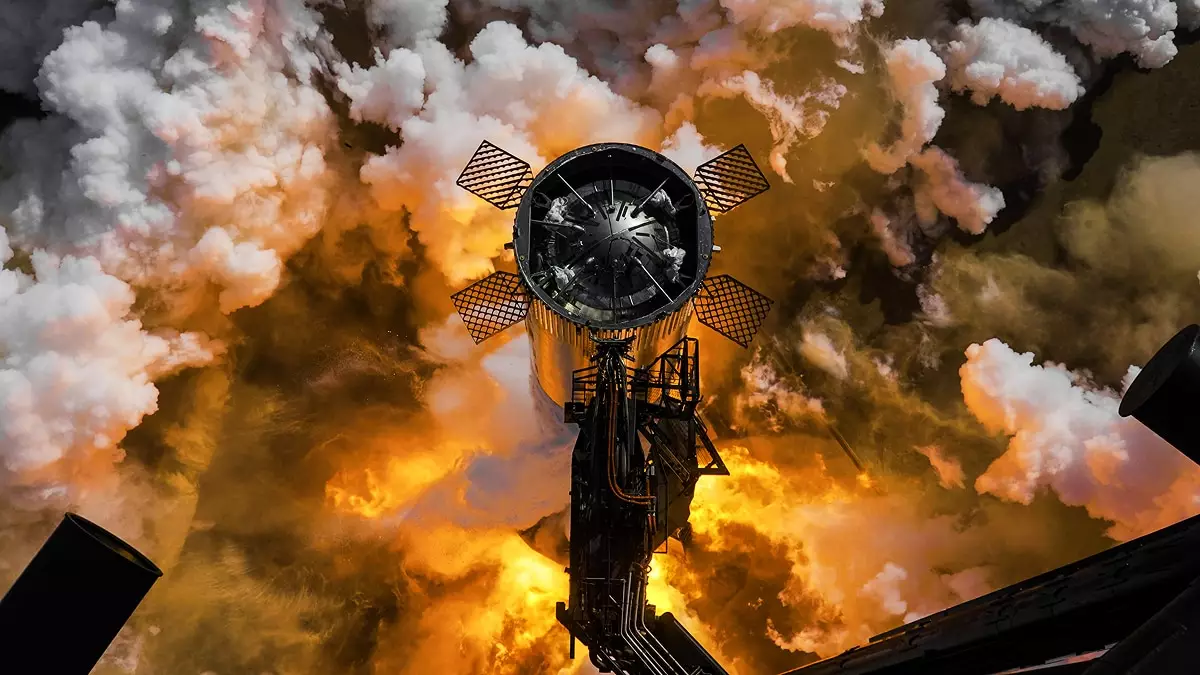SpaceX is steadfast in its ambition to redefine space travel through the continued development of its Starship launch system. Recent static fire tests at the Starbase facility in Texas have marked a significant step forward in this evolutionary process. These tests have provided invaluable insights into the performance of both the Super Heavy booster and Starship’s upper stage. By subjecting the Super Heavy to a full-duration static fire involving all 33 Raptor engines, SpaceX simulated the extreme conditions the vehicle will face during takeoff, thereby gathering crucial data to inform their development roadmap.
The second phase of testing, featuring the Starship’s upper stage, further pushed the boundaries of innovation by conducting engine tests under variable thrust conditions. This approach is particularly advantageous as it more closely mimics the dynamic environments of actual flight. Such thorough evaluations are essential for enhancing the propulsion systems; they allow engineers to pinpoint potential weaknesses and develop solutions prior to the next mission. With the integration of performance assessments from both stages, SpaceX is in a prime position to refine its operational strategies.
As the team gears up for the next integrated flight test, officially designated IFT-8, scheduled tentatively for the end of February, anticipation runs high. Regulatory hurdles remain, particularly the requirement for approval from the Federal Aviation Administration (FAA). This requirement underscores the importance of compliance in advancing these groundbreaking technologies while maintaining safety standards. Success in the upcoming test could not only validate previous improvements but also pave the way for a series of launches envisioned for the year.
Although the last flight attempt, IFT-7, in January 2025 demonstrated several advancements, it was not without challenges. The successful recovery of the Super Heavy booster indicated promising strides in reusable rocket technology. Nonetheless, the loss of communication with the Starship’s second stage during the mission and the subsequent debris falling over the Caribbean illustrated that there remains much work to be done. These learning experiences are vital; they provide concrete data that informs engineering decisions, aiming for improved flight stability and controlled descent.
Beyond the immediate objectives of the Starship program, there exist broader implications in the context of manned space exploration. The Starship vehicle is not merely a tool for SpaceX; it is a cornerstone of ambitious projects like NASA’s Artemis program, which seeks to establish a sustainable human presence on the Moon. The planned Starship lander for Artemis 3 in 2027 represents yet another opportunity for SpaceX to showcase its technological advancements. Each test flight serves not just as an experiment, but as a crucial step toward realizing these grand ambitions.
As SpaceX navigates the myriad challenges and opportunities in its development of the Starship system, the focus on rigorous testing and continuous improvement underscores the company’s commitment to revolutionizing space travel. The road ahead is undoubtedly filled with obstacles, but with each test, SpaceX is accelerating technology that could dominate the future of human spaceflight.

Leave a Reply